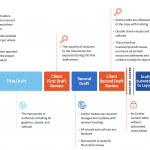
HPE Nimble dHCI Combines Benefits of Both CI and HCI
As I was wandering around the floor at VMworld 2019, one product in particular caught my eye—mainly because it seemed like an oxymoron. Intrigued, I had to find out more.
That product was in the HPE booth, and is branded “Nimble Storage dHCI.” I asked the booth worker what the “d” stood for, and he told me “disaggregated.”
“So, it’s disaggregated, hyperconverged infrastructure, right?” I asked.
“Yup,” he said.
That intrigued me. The whole idea behind hyperconverged infrastructure, or HCI, is to aggregate storage and compute (and, usually, networking), breaking down the traditional silos and simplifying well, everything, from deployment to management to scaling. But Nimble dHCI apparently disaggregated what was purposely aggregated. Hmm…
Once I did some research, it started to make sense. And it’s all about workloads. In many enterprise environments, workloads aren’t predictable the way they are in others. As these organizations move to digital transformation, the need for more resources can quickly overwhelm IT. Cloud computing, security, and the explosion of data—along with the need to do things with that data that help your business—are just a few examples of the workloads that are starving for more resources than you’ve probably got.
With traditional HCI, adding more nodes is easy, but typically it involves adding more of everything—more compute and storage. By design, the nodes are exactly the same. But what if you don’t need more compute? Or what if all you need is more compute, and no more storage? Should you pay for more of what you don’t need?
Converged infrastructure, or CI, simplifies deployment through pre-set, validated configurations that align the compute and storage better than traditional siloed infrastructure. In some ways, CI was a forerunner of HCI, although it’s still a viable solution today. It hasn’t taken off in popularity like HCI, in part because it’s not as seamless an experience; you’re still talking about distinct hardware that wasn’t made to be in the same chassis, like HCI. In addition, CI is typically not software-defined in the way that HCI is.
HPE recognized the benefits of both approaches, and created Nimble dHCI in response. It disaggregates compute and storage, but still treats them as a single, unified HCI platform. The chief advantage of this setup is that you can scale compute and storage independently, saving money. And you don’t add the complexity that’s typically seen with converged infrastructure, with its separate management interfaces. It’s all still managed through VMware vCenter, so admins will be immediately comfortable with it.
The platform is built with HP ProLiant systems, using the SimpliVity HCI foundation, including Nimble Storage arrays. Here’s one aspect of this offering that I don’t think has gotten nearly enough attention: if you have existing ProLiant servers that are Gen9 or Gen10 but aren’t HCI-enabled, you can install Nimble dHCI on top of them.
That’s right—if you’re an existing ProLiant shop (with the newer servers), you don’t have to install new nodes. You can turn your current hardware into an HCI solution, avoiding the expense of a greenfield implementation. I don’t know why this isn’t being discussed more, but I think it’s pretty significant.
One big value-add gained through Nimble dHCI is InfoSight, HP’s predictive analytics SaaS platform. Getting InfoSight was a major reason HPE bought Nimble Storage in 2017; and InfoSight’s ability to spot potential trouble spots ahead of time, as well as monitor and optimize the entire HCI stack, is a huge selling point of the solution.
To my mind, Nimble dHCI is really about choice: scaling compute and storage separately makes sense in many scenarios. In other ones—mostly smaller environments will less-extreme needs—standard HCI, and the lower costs associated with it, will work fine. In both cases, the advantages of HCI are evident.
Enterprise Strategy Group performed a technical validation on Nimble dHCI, and found that it was simple to set up and use, and worked as advertised. I think HPE may have a winner on its hands.